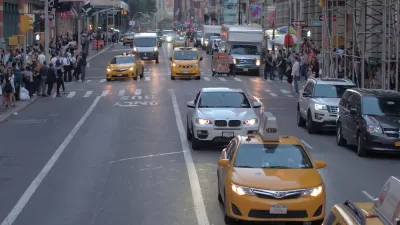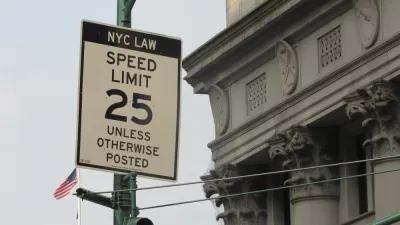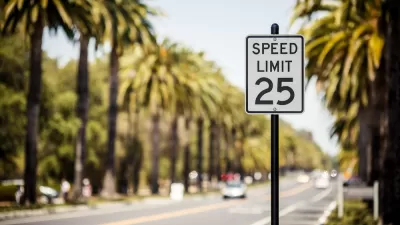City vehicles equipped with speed limiting technology showed nearly complete compliance with speed limit laws and a significant reduction in hard-braking events.

An intelligent speed assistance (ISA) pilot program launched by New York City on 50 city vehicles last August proved successful in improving compliance with speed limit laws, reports Danielle McLean for Smart Cities Dive.
According to the article, “During that time, hard-braking events were reduced by 36% and vehicles complied with local speed limits 99% of the time, with the 1% representing the time between the initial acceleration and the time it takes for the ISA to reduce the speed.”
The city’s Safe Fleet Transition Plan for city fleet vehicles, updated in 2018, “formalized a set of best-practice vehicle safety technologies for all City vehicles to prevent and mitigate crashes, in direct support of Vision Zero,” according to the plan’s introduction.
The city’s Department of Citywide Administrative Services (DCAS) will assess the full results after the program ends next year and “has also requested federal grant funding to broaden the rollout of ISA technology for about 7,500 fleet vehicles over three or four years.”
Last year, the National Transportation Safety Board (NTSB) recommended that the federal government require speed limiting technology on new cars, a suggestion that earned critical fear mongering from some pundits who viewed it as an invasion of privacy (more on that here).
FULL STORY: NYC says vehicles equipped with speed limit tech reduced unsafe driving

Alabama: Trump Terminates Settlements for Black Communities Harmed By Raw Sewage
Trump deemed the landmark civil rights agreement “illegal DEI and environmental justice policy.”

Planetizen Federal Action Tracker
A weekly monitor of how Trump’s orders and actions are impacting planners and planning in America.

The 120 Year Old Tiny Home Villages That Sheltered San Francisco’s Earthquake Refugees
More than a century ago, San Francisco mobilized to house thousands of residents displaced by the 1906 earthquake. Could their strategy offer a model for the present?

LA’s Tree Emergency Goes Beyond Vandalism
After a vandal destroyed dozens of downtown LA trees, Mayor Karen Bass vowed to replace them. Days later, she slashed the city’s tree budget.

Sacramento Leads Nation With Bus-Mounted Bike Lane Enforcement Cameras
The city is the first to use its bus-mounted traffic enforcement system to cite drivers who park or drive in bike lanes.

Seattle Voters Approve Social Housing Referendum
Voters approved a corporate tax to fund the city’s housing authority despite an opposition campaign funded by Amazon and Microsoft.
Urban Design for Planners 1: Software Tools
This six-course series explores essential urban design concepts using open source software and equips planners with the tools they need to participate fully in the urban design process.
Planning for Universal Design
Learn the tools for implementing Universal Design in planning regulations.
Ada County Highway District
Clanton & Associates, Inc.
Jessamine County Fiscal Court
Institute for Housing and Urban Development Studies (IHS)
City of Grandview
Harvard GSD Executive Education
Toledo-Lucas County Plan Commissions
Salt Lake City
NYU Wagner Graduate School of Public Service





























